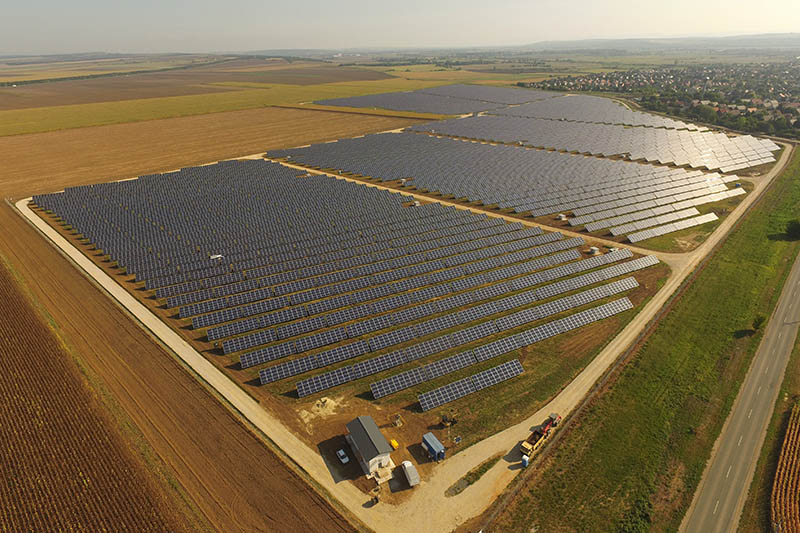Installation of a 20 MW photovoltaic power plant at the town of Felsőzsolca in Northern Hungary is delivering enough clean energy to meet the annual electricity needs of around 8 000 homes. The new plant, which received an investment from the EU’s Cohesion Fund, is helping Hungary reduce its reliance on fossil fuels and meet its climate change obligations.
New solar power plant delivers clean energy in Hungary
- 25 May 2020
The project was a milestone in the development of the Hungarian solar power capacity as it is one of the first projects of this size, and the first plant to be commissioned as part of our company's renewable programme.
The power plant is located on a 45 hectare site in the northern district of Felsőzsolca, on the outskirts of a village called Onga. The project included the installation of 73 720 solar panels, 47 000 of which have a 270 W capacity and 26 720 have a 275 W capacity. The construction included fitting 466 solar inverters, which convert the solar panels’ current so it can be fed into the local electricity network.
Cutting emissions
The average value of energy produced by the plant from renewable sources comes to 74 695 GJ per year. Meanwhile, the average reduction in greenhouse gas emissions is equivalent to 20 242 tonnes/CO2 annually. Over an average of 25 years, 20 748 753 kWh of electricity will be generated annually at Felsőzsolca. The power produced meets the yearly electricity consumption of about 8 000 households, thereby covering the needs of around 18 000 residents.
More than 350 people were employed during the plant’s construction and installation phase. Five personnel are permanently employed to operate and maintain the facility, which opened in August 2018. The solar plant is expected to bring wider economic benefits to the region. Through the leasing of municipal land that provides the ground for the plant, the local community will receive long-term, dependable revenue. The local business tax will be paid by investors during the plant’s operating period. In addition, the installation and operation the power plant is expected to improve the local community’s environmental awareness.
Meeting national goals
Operation of the plant contributes to meeting goals set out in both the National Energy Strategy and the Environmental and Energy Efficiency Operational Programme. This is achieved because the plant increases the proportion of energy generated through environment friendly renewable sources, which in turn helps to reduce greenhouse gas emissions produced by Hungary’s electricity network.
In addition, the project contributes to the reduction in Hungary’s energy imports and increases the country’s energy supply security.

